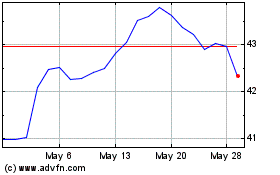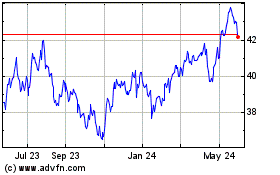As worries continue to grow over many developing nations around
the globe, some investors have decided to pull back and put assets
to work in safer markets like the United States. This trend and the
general risk off atmosphere as of late has pushed broad emerging
market funds like VWO or EEM below their corresponding American
benchmarks—by a pretty wide margin—in both the YTD and trailing one
year periods.
Furthermore, many of the most popular emerging market individual
country ETFs, such as those tracking nations like Brazil, India, or
China, have struggled lately as well. Funds tracking these markets
are all in the red in the trailing one year period, making many
investors pause before putting more dollars to work in these shaky
markets.
Yet while some nations have seen severe weakness in the
developing world, a few have been able to hold up quite well and
buck the negative trend in this important market segment.
Particularly, those in the Southeast Asian markets have been doing
a superb job, although over the past few years, none have been able
to match the robust returns that were seen in the Thai equity
markets (read Southeast Asia ETF Investing 101).
In fact, over the past three year period, the MSCI
Thailand Investable Market Index Fund (THD) has added over
90% in the time frame, beating the next closest nation by over
2,000 basis points. If that wasn’t enough, the product is still a
top five performing nation from a year-to-date look as well,
suggesting that the country has not only held up well in the market
uncertainty but has been a long term outperformer too.
Clearly, the country and its market have been on to something
over the past few years and investors who are looking for a new
emerging market would be wise to take notice. Below, we highlight
some of the key points from both the fund and the nation in order
to hopefully shed some light on why the Thailand ETF has been
pretty much unstoppable over the past three years (see Three
Overlooked Emerging Market ETFs).
Thai Market Trends
Thailand is still very much dependent on exports to power
growth, relying on a number of Western giants as well as
closer-to-home destinations to import its goods. Still, the country
has a relatively low public debt level and a modest budget gap,
metrics that are far lower than many of their more well-regarded
peers in both the Asia-Pacific region and the West.
Thanks to this, Thailand has a decent number of policy tools
still at its disposal, especially considering that the inflation
rate is very moderate at about 3%. However, these tools seem
unnecessary at this time, as the Thai consumer appears to be
picking up the slack in the nation’s economy (read Forget European
Woes with These Three Country ETFs).
In fact, growth is expected to come in between 5.5%-6% for the
second half of the year despite the fact that export growth looks
to grow at just 7.3%, according to Bloomberg. Furthermore, the
country is planning to spend more than $60 billion on new
infrastructure programs while it is also looking at other
simulative bills as well. "Thailand is one of the more resilient
economies compared with its Asian peers with regards to the risk
and headwinds from the US and Europe," Philip Wee of DBS bank told
the BBC's Asia Business Report.
All of this comes despite no real appreciation of the baht
against the American currency over the past few years. Or,
conversely, perhaps Thailand has seen such strong growth because it
has had such currency stability in the post-recession world,
helping to erase memories of the disastrous 1997 crisis, and
showcase how far the Thailand economy has come since then.
Thailand ETF in Focus
This strong investment climate and robust consumer class has led
the Thai ETF to hold up better than its peers in recent months, as
well as over the past few years. However, the fund is still
somewhat concentrated from both a sector and an individual security
perspective.
Banks comprise roughly one-third of the total assets while
energy companies makeup another fifth of the assets. Beyond this,
basic materials, consumer staples, and telecoms round out the rest
of the top five making up a combined 27% of assets.
Fortunately for Thailand, the country’s banking system is much
more locally and regionally exposed than some of the nation’s peers
in the region. This has allowed the country to ride the wave of the
improved consumer picture while also benefiting from the sound
fiscal position in many of the neighboring countries in the ASEAN
bloc (read Five Emerging Market Infrastructure ETFs for the Coming
Boom).
Investors should also note that the product has a pretty solid
level of AUM and average daily volume, suggesting that bid ask
spreads are relatively tight and that total costs will not come in
much higher than the 59 basis point expense ratio. It also doesn’t
hurt that THD has an annual yield of 2.6%, a level that is quite a
bit higher than both SPY and VWO at time of writing.
So despite the fund’s relatively heavy concentration, the
emerging market ETF still could be a solid choice for investors.
The nation is still growing at a solid clip and it remains well
insulated from many of the Western world’s woes (also see Frontier
Market ETF Investing 101).
Although it does have some exposure via its exports to the West,
the consumer class in the country is coming on strong which should
help to balance out the growth profile of the nation. Add in the
robust yield and the solid volume metrics of THD, and some
investors could still find a winner on their hands with this nearly
unstoppable emerging market ETF tracking the dynamic nation of
Thailand.
Want the latest recommendations from Zacks Investment Research?
Today, you can download 7 Best Stocks for the Next 30
Days. Click to get this free report >>
Follow @Eric Dutram on Twitter
Author is long VWO.
ISHARS-EMG MKT (EEM): ETF Research Reports
SPDR-SP 500 TR (SPY): ETF Research Reports
ISHRS-MSCI THAI (THD): ETF Research Reports
VIPERS-M EM MKT (VWO): ETF Research Reports
To read this article on Zacks.com click here.
Zacks Investment Research
Want the latest recommendations from Zacks Investment Research?
Today, you can download 7 Best Stocks for the Next 30 Days. Click
to get this free report
iShares MSCI Emerging Ma... (AMEX:EEM)
Historical Stock Chart
From Dec 2024 to Jan 2025

iShares MSCI Emerging Ma... (AMEX:EEM)
Historical Stock Chart
From Jan 2024 to Jan 2025
